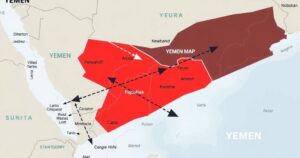Iran-US Nuclear Talks in Oman: Key Developments Amid Middle East Tensions

Iran and the US concluded a fourth round of nuclear talks in Oman, termed “difficult” and notably serious by Tehran, with plans for further discussions forthcoming. Meanwhile, Donald Trump is on a tour of the Middle East, highlighting the juxtaposition of diplomatic efforts and regional politics.
This past weekend, Iran and the United States engaged in a pivotal fourth round of nuclear negotiations in Oman. Iranian officials characterized these discussions as particularly challenging, asserting that they were the most “direct and serious” encounters to date. The parties have indicated intentions to continue these negotiations, suggesting a cautious yet hopeful outlook towards resolving ongoing tensions related to Iran’s nuclear program.
As diplomatic efforts unfolded, former President Donald Trump embarked on a regional tour, underscoring the delicate balance of international relations in the Middle East. Although Trump’s trip was unrelated to the current talks, it serves as a backdrop to the complicated interplays of influence within the region. Observers note that the convergence of these two events highlights the intricate dynamics at play in Middle Eastern geopolitics.
The Iranian stance during the talks reflects deep-seated reservations about the proposed nuclear frameworks, which they feel must address not only nuclear capabilities but also broader issues impacting regional stability. Several officials have previously emphasized that a viable agreement must involve mutual concessions, yet specifics remain elusive. As both sides approach negotiations with caution, it is clear that several difficult discussions lie ahead.
Efforts to engage with Iran have been persistent; however, many analysts remain skeptical about achieving a robust and lasting agreement amidst lingering animosities. The Iranian government appears set on negotiating terms that respect its sovereignty and provide economic relief in exchange for nuclear compliance. The outcome of these talks could potentially reshape relations not just between Iran and the US but also among neighboring countries.
Observers are watching closely as future rounds of negotiations are scheduled, despite the challenges inherent in reaching consensus. The return to the negotiating table suggests a willingness from both sides to explore avenues for dialogue, even as skepticism looms. This situation continues to draw significant international attention, particularly given its implications for global security and nuclear non-proliferation efforts.
In summary, the latest round of nuclear talks between Iran and the United States in Oman marks a critical step in ongoing diplomatic efforts. With Iran describing the discussions as both difficult and serious, the pathway to a potential agreement remains fraught with challenges. As the region grapples with geopolitical tensions, the implications of these talks extend beyond just Iran and the US, affecting broader Middle Eastern dynamics. Continued negotiations are expected as both parties seek to navigate this complex landscape.
Original Source: www.energyintel.com








